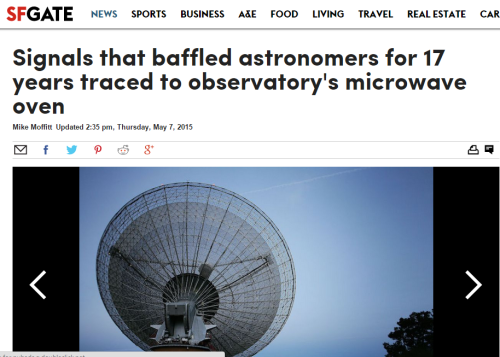Source:science Dump

Source:science dump
More Posts from Science-is-magical and Others

NASA’S TESS ROUNDS UP ITS FIRST PLANETS, SNARES FAR-FLUNG SUPERNOVAE
NASA’s Transiting Exoplanet Survey Satellite (TESS) has found three confirmed exoplanets, or worlds beyond our solar system, in its first three months of observations.
The mission’s sensitive cameras also captured 100 short-lived changes – most of them likely stellar outbursts – in the same region of the sky. They include six supernova explosions whose brightening light was recorded by TESS even before the outbursts were discovered by ground-based telescopes.
The new discoveries show that TESS is delivering on its goal of discovering planets around nearby bright stars. Using ground-based telescopes, astronomers are now conducting follow-up observations on more than 280 TESS exoplanet candidates.
The first confirmed discovery is a world called Pi Mensae c about twice Earth’s size. Every six days, the new planet orbits the star Pi Mensae, located about 60 light-years away and visible to the unaided eye in the southern constellation Mensa. The bright star Pi Mensae is similar to the Sun in mass and size.
“This star was already known to host a planet, called Pi Mensae b, which is about 10 times the mass of Jupiter and follows a long and very eccentric orbit,” said Chelsea Huang, a Juan Carlos Torres Fellow at the Massachusetts Institute of Technology’s (MIT) Kavli Institute for Astrophysics and Space Research (MKI) in Cambridge. “In contrast, the new planet, called Pi Mensae c, has a circular orbit close to the star, and these orbital differences will prove key to understanding how this unusual system formed.”
Next is LHS 3884b, a rocky planet about 1.3 times Earth’s size located about 49 light-years away in the constellation Indus, making it among the closest transiting exoplanets known. The star is a cool M-type dwarf star about one-fifth the size of our Sun. Completing an orbit every 11 hours, the planet lies so close to its star that some of its rocky surface on the daytime side may form pools of molten lava.
The third – and possibly fourth – planets orbit HD 21749, a K-type star about 80 percent the Sun’s mass and located 53 light-years away in the southern constellation Reticulum.
The confirmed planet, HD 21749b, is about three times Earth’s size and 23 times its mass, orbits every 36 days, and has a surface temperature around 300 degrees Fahrenheit (150 degrees Celsius). “This planet has a greater density than Neptune, but it isn’t rocky. It could be a water planet or have some other type of substantial atmosphere,” explained Diana Dragomir, a Hubble Fellow at MKI and lead author of a paper describing the find. It is the longest-period transiting planet within 100 light-years of the solar system, and it has the coolest surface temperature of a transiting exoplanet around a star brighter than 10th magnitude, or about 25 times fainter than the limit of unaided human vision.
What’s even more exciting are hints the system holds a second candidate planet about the size of Earth that orbits the star every eight days. If confirmed, it could be the smallest TESS planet to date.
TESS’s four cameras, designed and built by MKI and MIT’s Lincoln Laboratory in Lexington, Massachusetts, spend nearly a month monitoring each observing sector, a single swath of the sky measuring 24 by 96 degrees. The primary aim is to look for exoplanet transits, which occur when a planet passes in front of its host star as viewed from TESS’s perspective. This causes a regular dip in the measured brightness of the star that signals a planet’s presence.
In its primary two-year mission, TESS will observe nearly the whole sky, providing a rich catalog of worlds around nearby stars. Their proximity to Earth will enable detailed characterization of the planets through follow-up observations from space- and ground-based telescopes.
But in its month-long stare into each sector, TESS records many additional phenomena, including comets, asteroids, flare stars, eclipsing binaries, white dwarf stars and supernovae, resulting in an astronomical treasure trove.
In the first TESS sector alone, observed between July 25 and Aug. 22, 2018, the mission caught dozens of short-lived, or transient, events, including images of six supernovae in distant galaxies that were later seen by ground-based telescopes.
“Some of the most interesting science occurs in the early days of a supernova, which has been very difficult to observe before TESS,” said Michael Fausnaugh, a TESS researcher at MKI. “NASA’s Kepler space telescope caught five of these events as they brightened during its first four years of operations. TESS found as many in its first month.”
These early observations hold the key to understanding a class of supernovae that serve as an important yardstick for cosmological studies. Type Ia supernovae form through two channels. One involves the merger of two orbiting white dwarfs, compact remnants of stars like the Sun. The other occurs in systems where a white dwarf draws gas from a normal star, gradually gaining mass until it becomes unstable and explodes. Astronomers don’t know which scenario is more common, but TESS could detect modifications to the early light of the explosion caused by the presence of a stellar companion.
All science data from the first two TESS observation sectors were recently released to the scientific community through the Mikulski Archive for Space Telescopes (MAST) at the Space Telescope Science Institute in Baltimore.
More than a million TESS images were downloaded from MAST in the first few days,” said Thomas Barclay, a TESS researcher at NASA’s Goddard Space Flight Center in Greenbelt, Maryland, and the University of Maryland, Baltimore County. “The astronomical community’s reaction to the early data release showed us that the world is ready to jump in and add to the mission’s scientific bounty.
George Ricker, the mission’s principal investigator at MKI, said that TESS’s cameras and spacecraft were performing superbly. “We’re only halfway through TESS’s first year of operations, and the data floodgates are just beginning to open,” he said. “When the full set of observations of more than 300 million stars and galaxies collected in the two-year prime mission are scrutinized by astronomers worldwide, TESS may well have discovered as many as 10,000 planets, in addition to hundreds of supernovae and other explosive stellar and extragalactic transients.”
It always creeps me out...
…that no matter

how close

you get
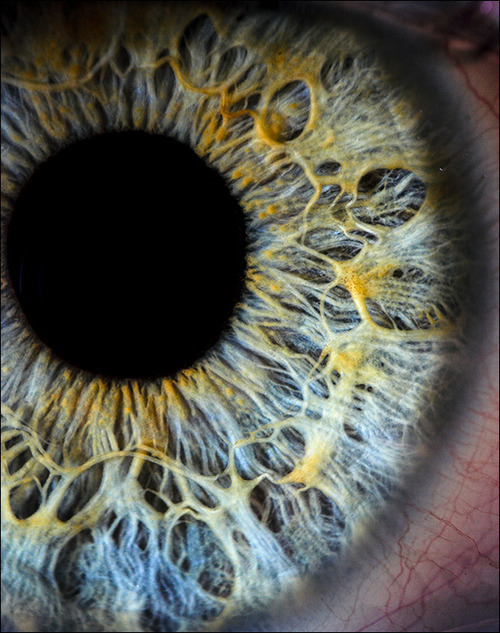
the pupil
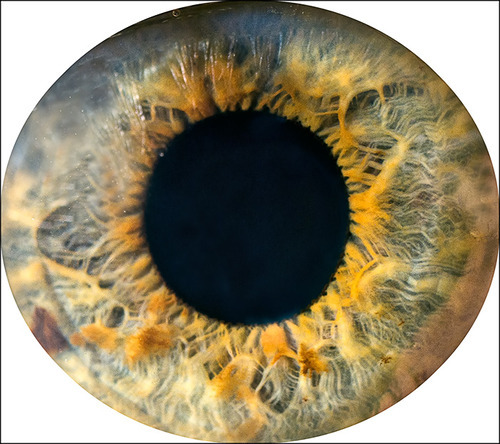
seems to
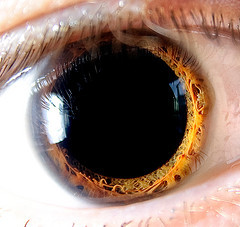
devour light
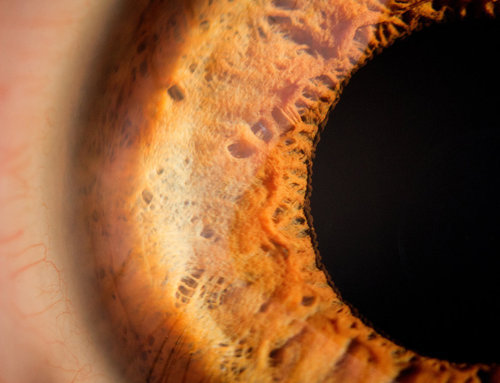
like a black hole
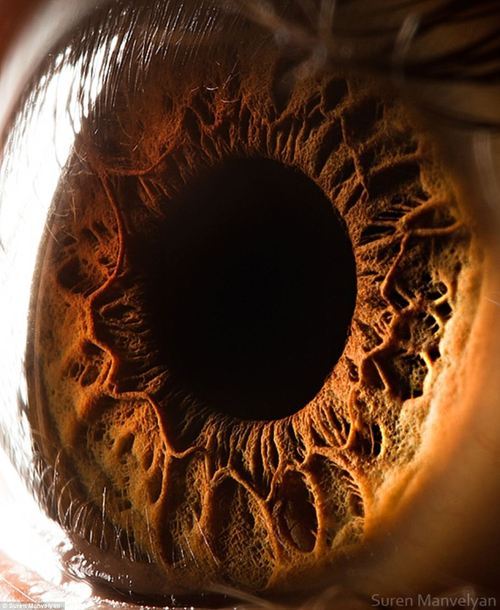
it reflects no light
I hate when people get all snobby like “uhm, humans didn’t EVOLVE from apes, humans and apes share a common ancestor”
Yeah well guess what shitlips, that common ancestor? an ape. By every taxonomical definition, it would be considered an ape.
.. I mean shit, by taxonomical definition, humans still are apes. They fall under the family Hominidae. We didn’t ditch that branch when we put pants on.

A bizarre new species of marine worm lacks a number of internal features common to other animals — including an anus, new research shows.
New technique captures the activity of an entire brain in a snapshot
When it comes to measuring brain activity, scientists have tools that can take a precise look at a small slice of the brain (less than one cubic millimeter), or a blurred look at a larger area. Now, researchers at The Rockefeller University have described a new technique that combines the best of both worlds—it captures a detailed snapshot of global activity in the mouse brain.

(Image caption: Sniff, sniff: This density map of the cerebral cortex of a mouse shows which neurons get activated when the animal explores a new environment. The lit up region at the center (white and yellow) represents neurons associated with the mouse’s whiskers)
“We wanted to develop a technique that would show you the level of activity at the precision of a single neuron, but at the scale of the whole brain,” says study author Nicolas Renier, a postdoctoral fellow in the lab of Marc Tessier-Lavigne, Carson Family Professor and head of the Laboratory of Brain Development and Repair, and president of Rockefeller University.
The new method, described in Cell, takes a picture of all the active neurons in the brain at a specific time. The mouse brain contains dozens of millions of neurons, and a typical image depicts the activity of approximately one million neurons, says Tessier-Lavigne. “The purpose of the technique is to accelerate our understanding of how the brain works.”
Making brains transparent
“Because of the nature of our technique, we cannot visualize live brain activity over time—we only see neurons that are active at the specific time we took the snapshot,” says Eliza Adams, a graduate student in Tessier-Lavigne’s lab and co-author of the study. “But what we gain in this trade-off is a comprehensive view of most neurons in the brain, and the ability to compare these active neuronal populations between snapshots in a robust and unbiased manner.”
Here’s how the tool works: The researchers expose a mouse to a situation that would provoke altered brain activity—such as taking an anti-psychotic drug, brushing whiskers against an object while exploring, and parenting a pup—then make the measurement after a pause. The pause is important, explains Renier, because the technique measures neuron activity indirectly, via the translation of neuronal genes into proteins, which takes about 30 minutes to occur.
The researchers then treat the brain to make it transparent—following an improved version of a protocol called iDISCO, developed by Zhuhao Wu, a postdoctoral associate in the Tessier-Lavigne lab—and visualize it using light-sheet microscopy, which takes the snapshot of all active neurons in 3-D.
To determine where an active neuron is located within the brain, Christoph Kirst, a fellow in Rockefeller’s Center for Studies in Physics and Biology, developed software to detect the active neurons and to automatically map the snapshot to a 3-D atlas of the mouse brain, generated by the Allen Brain Institute.
Although each snapshot of brain activity typically includes about one million active neurons, researchers can sift through that mass of data relatively quickly if they compare one snapshot to another snapshot, says Renier. By eliminating the neurons that are active in both images, researchers are left only those specific to each one, enabling them to home in on what is unique to each state.
Observing and testing how the brain works
The primary purpose of the tool, he adds, is to help researchers generate hypotheses about how the brain functions that then can be tested in other experiments. For instance, using their new techniques, the researchers, in collaboration with Catherine Dulac and other scientists at Harvard University, observed that when an adult mouse encounters a pup, a region of its brain known to be active during parenting—called the medial pre-optic nucleus, or MPO—lights up. But they also observed that, after the MPO area becomes activated, there is less activity in the cortical amygdala, an area that processes aversive responses, which they found to be directly connected to the MPO “parenting region.”
“Our hypothesis,” says Renier, “is that parenting neurons put the brake on activity in the fear region, which may suppress aversive responses the mice may have towards pups.” Indeed, mice that are being aggressive to pups tend to show more activity in the cortical amygdala.
To test this idea, the next step is to block the activity of this brain region to see if this reduces aggression in the mice, says Renier.
The technique also has broader implications than simply looking at what areas of the mouse brain are active in different situations, he adds. It could be used to map brain activity in response to any biological change, such as the spread of a drug or disease, or even to explore how the brain makes decisions. “You can use the same strategy to map anything you want in the mouse brain,” says Renier.
A guy asks an engineer “hey what 2 + 2?”
Engineer responds “4. No wait make 5 just to be on the safe side.”
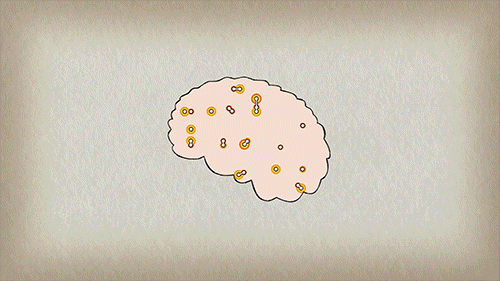
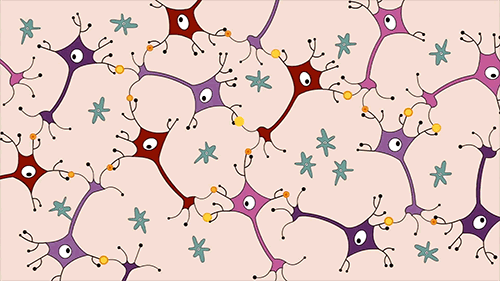

How playing an instrument benefits your brain
Recent research about the mental benefits of playing music has many applications, such as music therapy for people with emotional problems, or helping to treat the symptoms of stroke survivors and Alzheimer’s patients. But it is perhaps even more significant in how much it advances our understanding of mental function, revealing the inner rhythms and complex interplay that make up the amazing orchestra of our brain.
Did you know that every time musicians pick up their instruments, there are fireworks going off all over their brain? On the outside they may look calm and focused, reading the music and making the precise and practiced movements required. But inside their brains, there’s a party going on.
From the TED-Ed lesson How playing an instrument benefits your brain - Anita Collins
Animation by Sharon Colman Graham
A reminder that NASA isn’t the only space agency
I have seen many “Space achievements 2015” articles and posts leaving international accomplisments completely out, so here are some of them:
1. A new type of basaltic rock on the moon was found by Chinese robotic lander.
China National Space Administration’s Chang’e-3 landed on the Moon on 14 December 2013, becoming the first spacecraft to soft-land since the Soviet Union‘s Luna 24 in 1976.

2. On February 11, the European Space Agency, ESA, successfully launched on a suborbital trajectory and recovered an experimental wingless glider, IXV.
It became the first true “lifting body” vehicle, which reached a near-orbital speed and then returned back to Earth without any help from wings.

3. On December 9, Japan’s Akatsuki spacecraft succeeded entering orbit of Venus.
Japan Aerospace eXploration Agency’s Akatsuki is the first spacecraft to explore Venus since the ESA’s Venus Express reached the end of its mission in 2014.

4. ESA’s Rosetta spacecraft detected oxygen ‘leaking’ from comet 67P/Churyumov-Gerasimenko, the first time these molecules have been seen around a comet.
Rosetta spacecraft, the first to drop a lander (named Philae) on a comet, entered orbit around 67P in 2014 and continues to orbit the body. On June 13, European Space Operations Centre in Darmstadt, Germany, received signals from the Philae lander after months of silence.

5. The Canadian Space Agency has provided NASA with a laser mapping system that will scan an asteroid that could potentially hit the Earth in about 200 years

6. The high-resolution stereo camera on ESA’s Mars Express captured this sweeping view from the planet’s south polar ice cap and across its cratered highlands and beyond.

find Sci-Universe on Tumblr, Instagram & Facebook
-
 haunt3dgh0st liked this · 3 years ago
haunt3dgh0st liked this · 3 years ago -
 asaintexupery liked this · 5 years ago
asaintexupery liked this · 5 years ago -
 edenrain97 liked this · 5 years ago
edenrain97 liked this · 5 years ago -
 sssssssssssssaint liked this · 5 years ago
sssssssssssssaint liked this · 5 years ago -
 shaoshuan liked this · 5 years ago
shaoshuan liked this · 5 years ago -
 allpinsandneedles liked this · 6 years ago
allpinsandneedles liked this · 6 years ago -
 studyingjelly liked this · 6 years ago
studyingjelly liked this · 6 years ago -
 peanutpie57 liked this · 6 years ago
peanutpie57 liked this · 6 years ago -
 xzfilms liked this · 6 years ago
xzfilms liked this · 6 years ago -
 lemonseater18 liked this · 6 years ago
lemonseater18 liked this · 6 years ago -
 earthtofatma liked this · 7 years ago
earthtofatma liked this · 7 years ago -
 rainbow-monkey666 liked this · 7 years ago
rainbow-monkey666 liked this · 7 years ago -
 sleeepy-sun liked this · 7 years ago
sleeepy-sun liked this · 7 years ago -
 smokeyrutilequartz reblogged this · 7 years ago
smokeyrutilequartz reblogged this · 7 years ago -
 smokeyrutilequartz liked this · 7 years ago
smokeyrutilequartz liked this · 7 years ago -
 yeetclarinet liked this · 7 years ago
yeetclarinet liked this · 7 years ago -
 justarandomjhopestan-blog liked this · 7 years ago
justarandomjhopestan-blog liked this · 7 years ago -
 masha-bujo reblogged this · 7 years ago
masha-bujo reblogged this · 7 years ago -
 logophilestudies reblogged this · 7 years ago
logophilestudies reblogged this · 7 years ago -
 pisceangeranium liked this · 7 years ago
pisceangeranium liked this · 7 years ago -
 gabrielletyanna liked this · 7 years ago
gabrielletyanna liked this · 7 years ago -
 goddess-of-the-rainbows-blog liked this · 7 years ago
goddess-of-the-rainbows-blog liked this · 7 years ago -
 indykernels-blog liked this · 7 years ago
indykernels-blog liked this · 7 years ago -
 sleepymedblr liked this · 7 years ago
sleepymedblr liked this · 7 years ago -
 nessies-wife liked this · 7 years ago
nessies-wife liked this · 7 years ago -
 butcheredtongues reblogged this · 7 years ago
butcheredtongues reblogged this · 7 years ago -
 butcheredtongues liked this · 7 years ago
butcheredtongues liked this · 7 years ago -
 studydoeswonders-blog liked this · 7 years ago
studydoeswonders-blog liked this · 7 years ago -
 bunniesandcellardoors reblogged this · 7 years ago
bunniesandcellardoors reblogged this · 7 years ago -
 alkhior liked this · 7 years ago
alkhior liked this · 7 years ago -
 imrats liked this · 7 years ago
imrats liked this · 7 years ago -
 nap66 reblogged this · 7 years ago
nap66 reblogged this · 7 years ago -
 nap66 liked this · 7 years ago
nap66 liked this · 7 years ago -
 blackhowellbae liked this · 7 years ago
blackhowellbae liked this · 7 years ago -
 artymcart1-blog liked this · 7 years ago
artymcart1-blog liked this · 7 years ago -
 shittygeminibitch-blog reblogged this · 7 years ago
shittygeminibitch-blog reblogged this · 7 years ago -
 meteorologica reblogged this · 7 years ago
meteorologica reblogged this · 7 years ago -
 frankunderwoods-blog reblogged this · 7 years ago
frankunderwoods-blog reblogged this · 7 years ago -
 frankunderwoods-blog liked this · 7 years ago
frankunderwoods-blog liked this · 7 years ago
